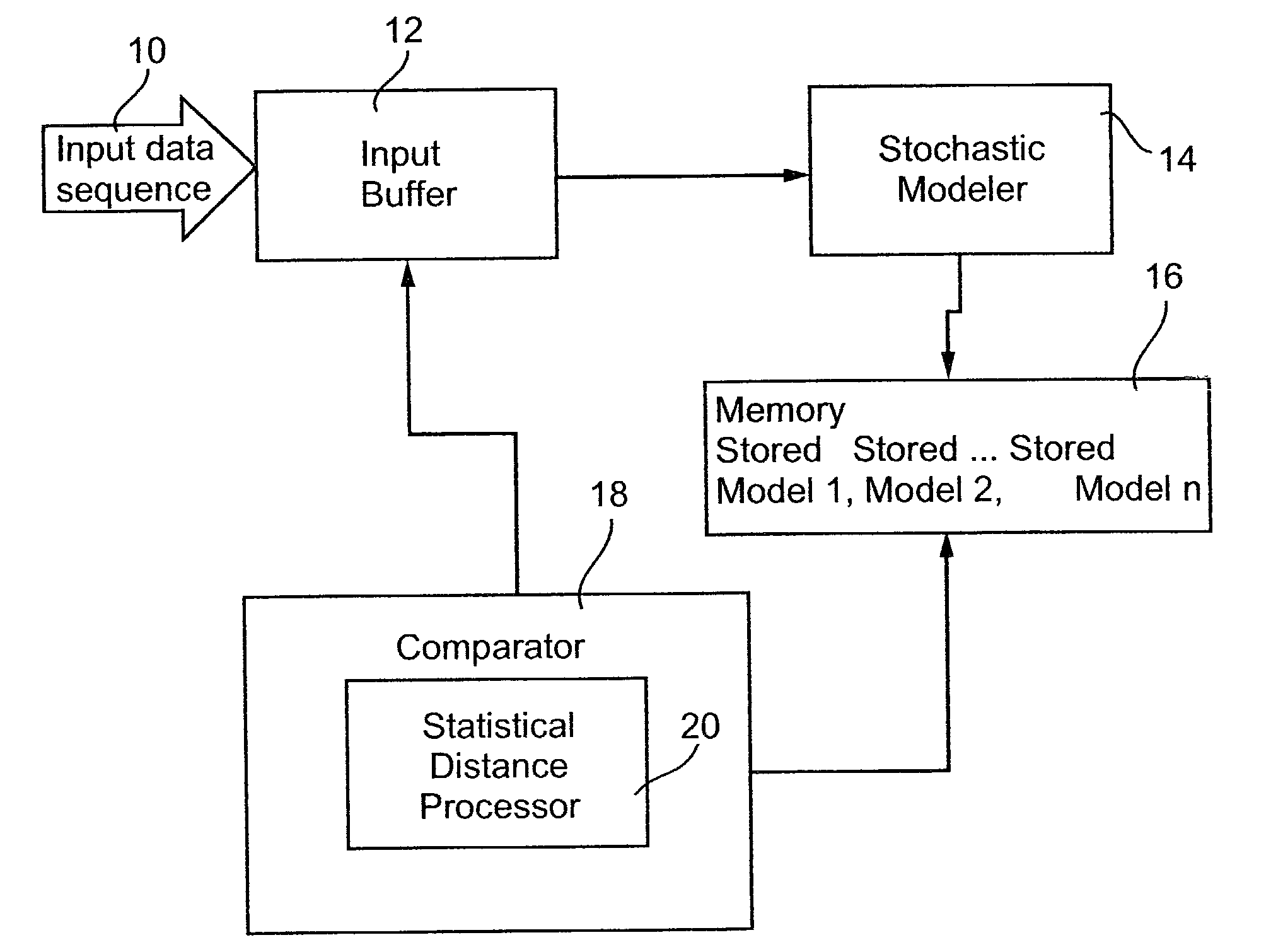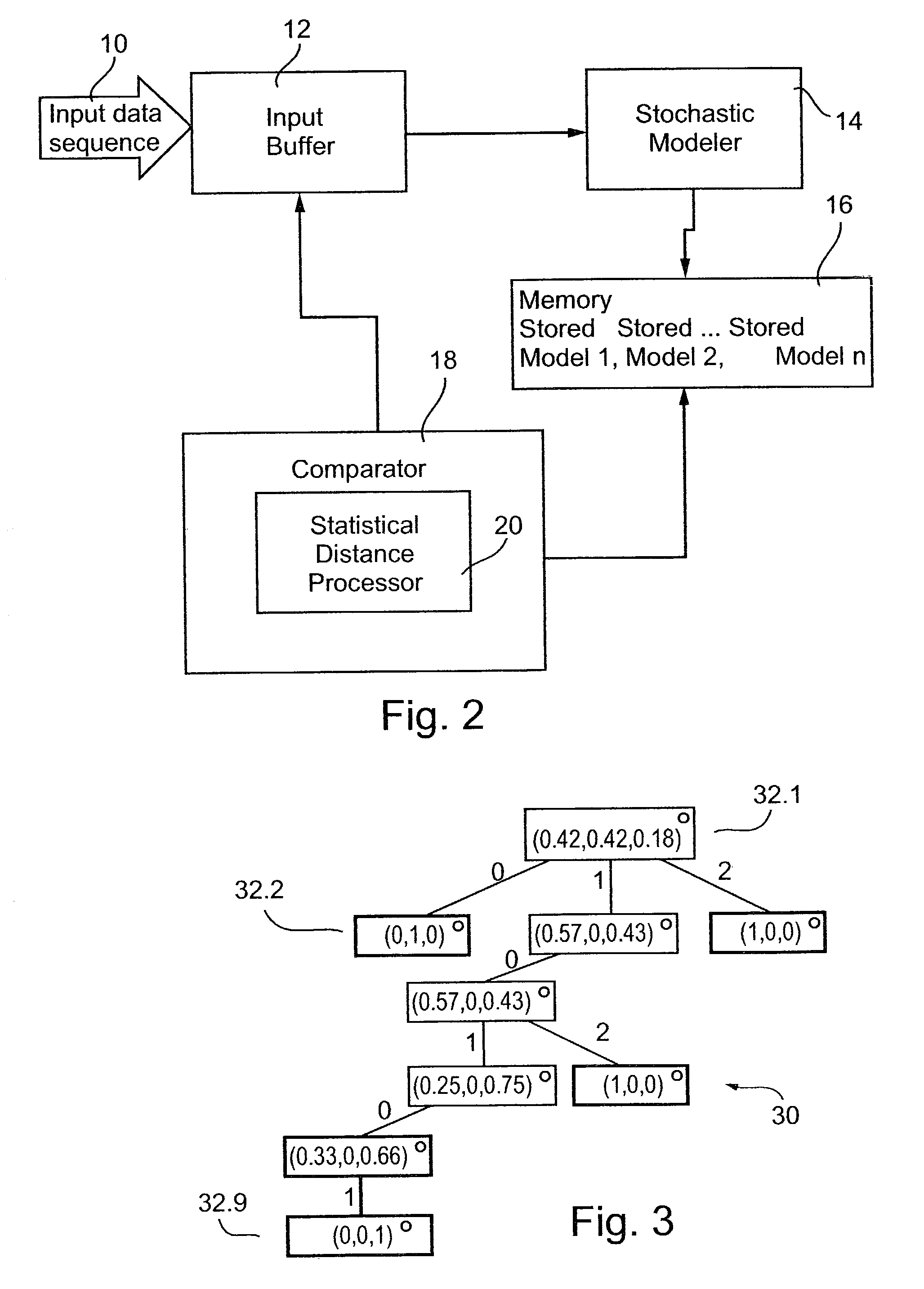Stochastic modeling of time distributed sequences
a distributed sequence and stochastic modeling technology, applied in adaptive control, instruments, code conversion, etc., can solve the problems of sequences not generally leading to useful, complex relationships within data, non-linear and unknown,
- Summary
- Abstract
- Description
- Claims
- Application Information
AI Technical Summary
Benefits of technology
Problems solved by technology
Method used
Image
Examples
numerical example
[0214]To assess the effectiveness of the suggested CSPC procedure for the monitoring of state dependent data, the CSPC procedure is applied to the following numerical example, which models a process of accumulated errors using a feedback control mechanism.
[0215]In many industrial processes, such as in chemical or metal welding processes, the process output is adjusted by applying a closed-loop controller to certain process variable(s). As an example, the temperature in a chemical reactor is controlled by a thermostat, or, the position of a robotic length of input sequences; v) the order of input symbols, etc. Further improvement of the model is possible by optimization of the manipulator is adjusted by a (PID) feedback controller. Such feedback controllers are likely to introduce dynamics and dependencies into the process output, which is affected by the accumulated adjustments and errors. It is, therefore, reasonable to try applying known SPC methods based on time-series to the mon...
PUM
 Login to View More
Login to View More Abstract
Description
Claims
Application Information
 Login to View More
Login to View More - R&D
- Intellectual Property
- Life Sciences
- Materials
- Tech Scout
- Unparalleled Data Quality
- Higher Quality Content
- 60% Fewer Hallucinations
Browse by: Latest US Patents, China's latest patents, Technical Efficacy Thesaurus, Application Domain, Technology Topic, Popular Technical Reports.
© 2025 PatSnap. All rights reserved.Legal|Privacy policy|Modern Slavery Act Transparency Statement|Sitemap|About US| Contact US: help@patsnap.com



